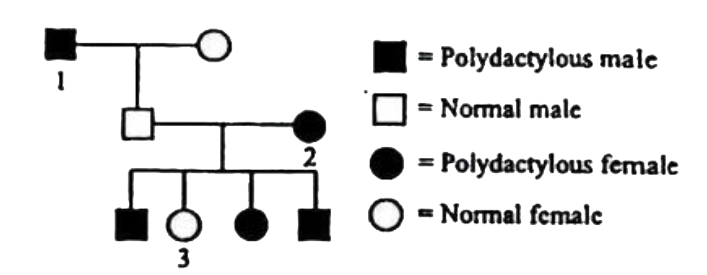A disease which often produces deformities of fingers and toes is
Poliomyelitis
Tuberculosis
Typhoid
Leprosy
The correct Answer is:D
Step-by-Step Solution:
1. Understanding the Question: The question asks for a disease that causes deformities in fingers and toes. We need to analyze the options provided to find the correct answer.
2. Analyzing Poliomyelitis:
- Poliomyelitis, also known as infantile paralysis, is caused by the poliovirus.
- It primarily leads to muscle weakness and inability to move.
- It does not cause deformities in fingers and toes.
- Conclusion: Poliomyelitis is not the correct answer.
3. Analyzing Tuberculosis:
- Tuberculosis (TB) is caused by Mycobacterium tuberculosis.
- It mainly affects the lungs, lymph nodes, bones, and joints, causing symptoms like fever, cough, and sputum with blood.
- It does not lead to deformities in fingers and toes.
- Conclusion: Tuberculosis is not the correct answer.
4. Analyzing Typhoid:
- Typhoid fever is caused by Salmonella typhi and primarily affects the small intestine.
- Symptoms include sustained high fever, stomach pain, weakness, and loss of appetite.
- Typhoid does not result in deformities in fingers and toes.
- Conclusion: Typhoid is not the correct answer.
5. Analyzing Leprosy:
- Leprosy, also known as Hansen's disease, is caused by Mycobacterium leprae.
- It leads to light-colored patches on the skin, thickening of nerves, and partial or total loss of sensation.
- Importantly, leprosy can cause deformities in fingers and toes due to its effect on peripheral nerves.
- Conclusion: Leprosy is the correct answer.
6. Final Answer: The disease that often produces deformities of fingers and toes is Leprosy.
---
- Poliomyelitis, also known as infantile paralysis, is caused by the poliovirus.
- It primarily leads to muscle weakness and inability to move.
- It does not cause deformities in fingers and toes.
- Conclusion: Poliomyelitis is not the correct answer.
- Tuberculosis (TB) is caused by Mycobacterium tuberculosis.
- It mainly affects the lungs, lymph nodes, bones, and joints, causing symptoms like fever, cough, and sputum with blood.
- It does not lead to deformities in fingers and toes.
- Conclusion: Tuberculosis is not the correct answer.
- Typhoid fever is caused by Salmonella typhi and primarily affects the small intestine.
- Symptoms include sustained high fever, stomach pain, weakness, and loss of appetite.
- Typhoid does not result in deformities in fingers and toes.
- Conclusion: Typhoid is not the correct answer.
- Leprosy, also known as Hansen's disease, is caused by Mycobacterium leprae.
- It leads to light-colored patches on the skin, thickening of nerves, and partial or total loss of sensation.
- Importantly, leprosy can cause deformities in fingers and toes due to its effect on peripheral nerves.
- Conclusion: Leprosy is the correct answer.
Topper's Solved these Questions
- HUMAN HEALTH AND DISEASEBOOK - CENGAGE BIOLOGY ENGLISHCHAPTER - HUMAN HEALTH AND DISEASEEXERCISE - ARCHIVES
46 Videos
- EVOLUTIONBOOK - CENGAGE BIOLOGY ENGLISHCHAPTER - EVOLUTIONEXERCISE - Archives
38 Videos
- HUMAN REPRODUCTION BOOK - CENGAGE BIOLOGY ENGLISHCHAPTER - HUMAN REPRODUCTION EXERCISE - Assertion -Reasoning Question
16 Videos
Similar Questions
Rh factor can produce disease
View SolutionA shark which often ascends Hoogly is
View SolutionX and Y are diseases in infants.X is produced by deficiency of protein and calories.Y is produced by deficiency of protein and unaccompanied by calorie deficiency.X and Y are respectively
View SolutionIn humans, polydactyly (i.e. presence of extra fingers and toes) is determined by a dominant autosomal allele (P) and the normal condition is determined by a recessive allele(p). Find out the possible genotypes of family members 1,2 and 3 in the given pedigree.

View SolutionLactic acid is produced quite often in human
View SolutionWhich step does not involve in DNA finger printing
View SolutionMicrofossils often present in petroleum producing formations are those of
View SolutionOrganisms which thrive in skin folds such as groin or between toes of humans are
View SolutionA person suffers from a diseases in which a slowly developing chronic inflammation of the organs is observed. The pathogen is known to live in the lymphatic vessels of the lower limbs. They also form gross deformities and affects the genital organs. Which of the following organisms is the vector for this disease ?
View SolutionWhich step is not correct in DNA finger printing-
View Solution
